In 2024, sports car enthusiasts have a wealth of options when it comes to selecting the ultimate driving machine. Various manufacturers are offering performance vehicles across a broad price range, ensuring that there’s something for every budget in the brand-new sports car market.
While drivability is often the primary concern for buyers, reliability has emerged as a critical factor in the highly competitive sports car segment. Given the investment involved, prospective owners appreciate the assurance that they won’t face unexpected costs after purchasing their new vehicle. Below, we present a list of key sports cars available in 2024, ranked by their reliability.
This update includes five new models to provide a comprehensive overview.
To ensure the most accurate and up-to-date information, this article draws on data from various manufacturer websites and authoritative sources, including Consumer Reports, RepairPal, and CarEdge. The cars listed are organized according to their ISeeCars reliability scores, ranked from lowest to highest, while also taking into account ratings from Consumer Reports.
10) 2024 BMW M2
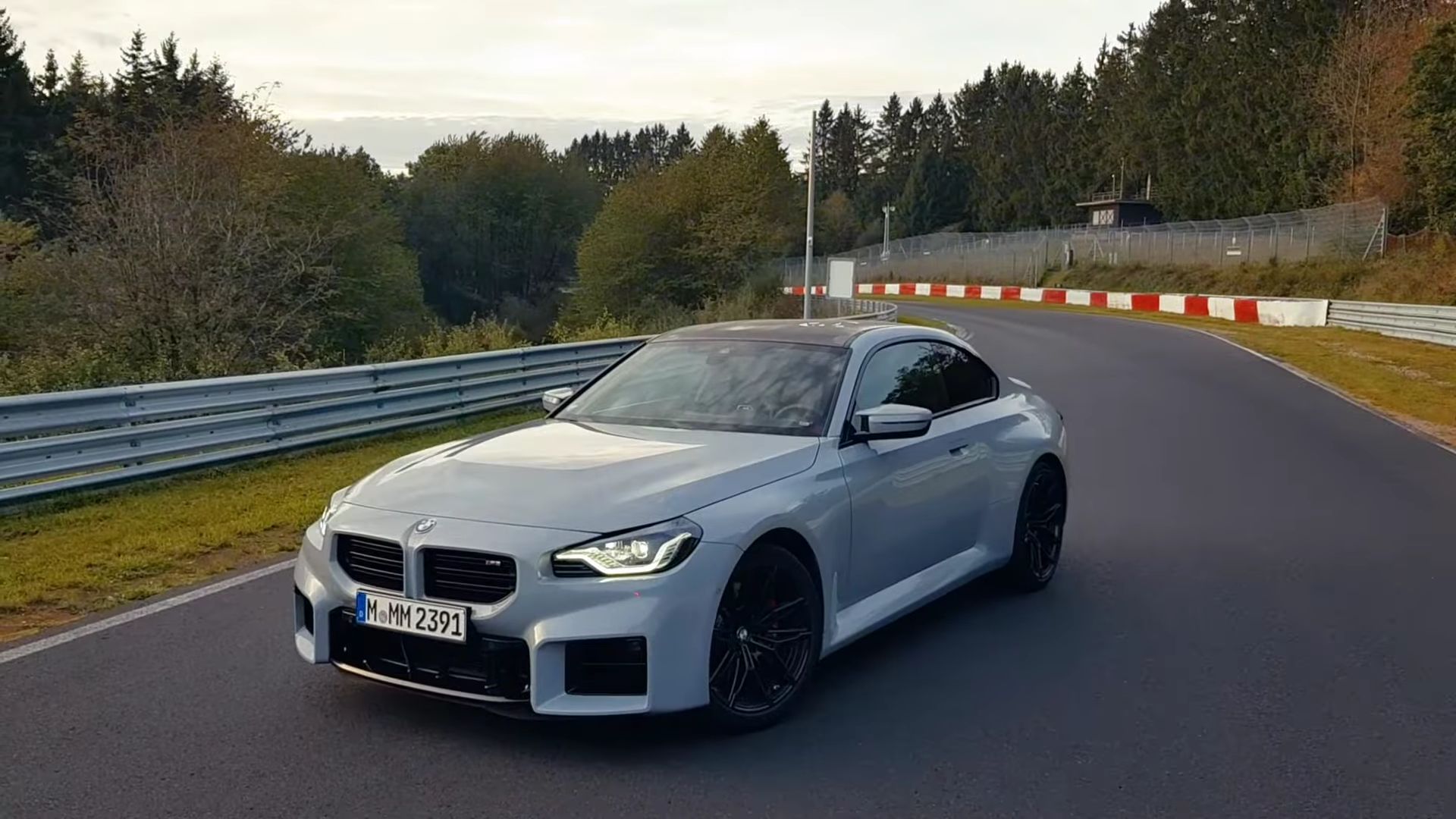
The 2024 BMW M2 stands out as one of the purest sports cars available today. Redesigned in 2023, the 2024 model carries forward this impressive momentum with a starting price of $63,200. It generates 453 horsepower and 406 pound-feet of torque from its twin-turbocharged inline-six engine, just shy of the performance levels offered by the larger M3 and M4 models.
German engineering is renowned for its craftsmanship, and the latest M2 exemplifies this. So far, the 2 Series has undergone one recall this year due to loose steering gear. Annual maintenance costs are yet to be established, as this second generation of the M2 was only recently launched.
The BMW M2 is a high-performance compact coupe that has earned a reputation as a purist’s sports car, appealing to driving enthusiasts who appreciate a combination of power, agility, and classic rear-wheel-drive dynamics. The 2024 BMW M2 continues to build on this heritage, offering a thrilling driving experience in a relatively compact package, while incorporating modern technology and performance features that raise it beyond the previous generation.
At the heart of the 2024 BMW M2 is a powerful 3.0-liter twin-turbocharged inline-six engine, derived from the larger M3 and M4 models. This engine produces an impressive 453 horsepower and 406 lb-ft of torque, providing the M2 with exhilarating acceleration. The M2 can sprint from 0 to 60 mph in just 3.9 seconds with the standard six-speed manual transmission, and even faster, at 3.6 seconds, when equipped with the optional eight-speed automatic. This powertrain is a standout feature, delivering robust performance across the rev range, with minimal turbo lag and plenty of punch in higher gears.
The M2’s rear-wheel-drive setup ensures a traditional sports car feel, with precise handling and excellent feedback through the steering wheel. Its compact dimensions and perfectly balanced chassis contribute to its agility, making it a joy to drive on twisty roads or track days. The adaptive M suspension, which is standard on the M2, allows drivers to adjust the firmness of the ride to match their driving style and road conditions. In its stiffest setting, the suspension delivers sharp, responsive handling, while the more relaxed modes offer a degree of comfort for daily driving.
One of the defining aspects of the M2 is the availability of a manual transmission, something increasingly rare in today’s performance cars. This six-speed manual provides a more engaging driving experience, with short, precise throws and a satisfying mechanical feel. For those who prefer the convenience and quick-shifting capability of an automatic, the eight-speed unit is equally impressive, delivering smooth, rapid gear changes with minimal interruption in power.
While the performance of the BMW M2 is its main selling point, the car also offers a comfortable and high-quality interior. The cabin design reflects BMW’s focus on driver engagement, with supportive M-specific seats, a chunky steering wheel, and intuitive controls that are easy to access while driving. The materials used throughout the cabin are of high quality, with soft-touch surfaces, premium leather, and carbon-fiber accents that reinforce the M2’s sporty character.
The technology in the M2 is a step forward from previous generations, with BMW’s latest iDrive 8 infotainment system taking center stage. This system is housed in a curved display that integrates both the digital instrument cluster and the central touchscreen.
The graphics are crisp, and the interface is user-friendly, allowing for easy navigation through various menus and functions. Apple CarPlay, Android Auto, and wireless charging come standard, ensuring that the M2 is as connected as it is capable. The system also offers advanced navigation, voice recognition, and customizable displays, allowing drivers to tailor the experience to their preferences.
Safety features are not overlooked in the M2, despite its focus on performance. The car comes equipped with a suite of driver assistance systems, including forward collision warning, automatic emergency braking, lane departure warning, and adaptive cruise control. These features add an extra layer of security during everyday driving without detracting from the M2’s dynamic driving experience.
In terms of design, the 2024 BMW M2 is unmistakably a member of the M family, with aggressive styling cues that set it apart from the standard 2 Series models. The wide front grille, flared wheel arches, and quad exhaust outlets give the M2 a muscular stance, while functional aerodynamic elements like the front splitter and rear diffuser enhance performance.
The M2 sits on staggered 19-inch front and 20-inch rear wheels, wrapped in high-performance tires that provide excellent grip in both dry and wet conditions. The car’s compact proportions and bold design give it a distinctive presence on the road, capturing the essence of BMW’s motorsport heritage.
Despite its performance focus, the M2 remains practical enough for daily use. The rear seats, while not as spacious as those in a larger coupe, are usable for short trips, and the trunk offers enough space for a weekend’s worth of luggage. Fuel efficiency, while not a primary concern for most buyers in this segment, is reasonable given the car’s performance, with an EPA rating of around 19 mpg in the city and 24 mpg on the highway when paired with the automatic transmission.
For driving enthusiasts, one of the key advantages of the BMW M2 is its value proposition. While it is not an inexpensive car, it offers a level of performance and driving engagement that rivals more expensive sports cars.
The starting price of the M2 is competitive within the high-performance compact coupe segment, and the optional extras, while adding to the overall cost, allow for a high degree of customization. Whether opting for additional carbon fiber trim, enhanced performance features like carbon-ceramic brakes, or upgraded interior materials, buyers can tailor the M2 to their exact preferences.
The 2024 BMW M2 faces stiff competition in the high-performance coupe segment. Rivals like the Porsche 718 Cayman, Audi RS3, and Mercedes-AMG CLA45 offer different takes on the formula, each with its own strengths.
The Porsche 718 Cayman, for instance, is known for its mid-engine balance and precision handling, while the Audi RS3 boasts all-wheel drive and a five-cylinder engine that delivers unique performance characteristics. However, the M2 stands out for its combination of rear-wheel-drive dynamics, available manual transmission, and the distinctive character that comes with the M badge.
The BMW M2 is an exceptional choice for those who prioritize driving enjoyment and performance in a compact coupe. Its potent engine, precise handling, and engaging manual transmission make it a car that rewards spirited driving, while its refined interior and modern technology ensure it remains comfortable and practical enough for everyday use. For driving enthusiasts looking for a sports car that delivers both thrills and value, the 2024 BMW M2 is hard to beat. It embodies BMW’s commitment to driving excellence and continues to be a standout in the M lineup.
9) 2024 Acura Integra Type S
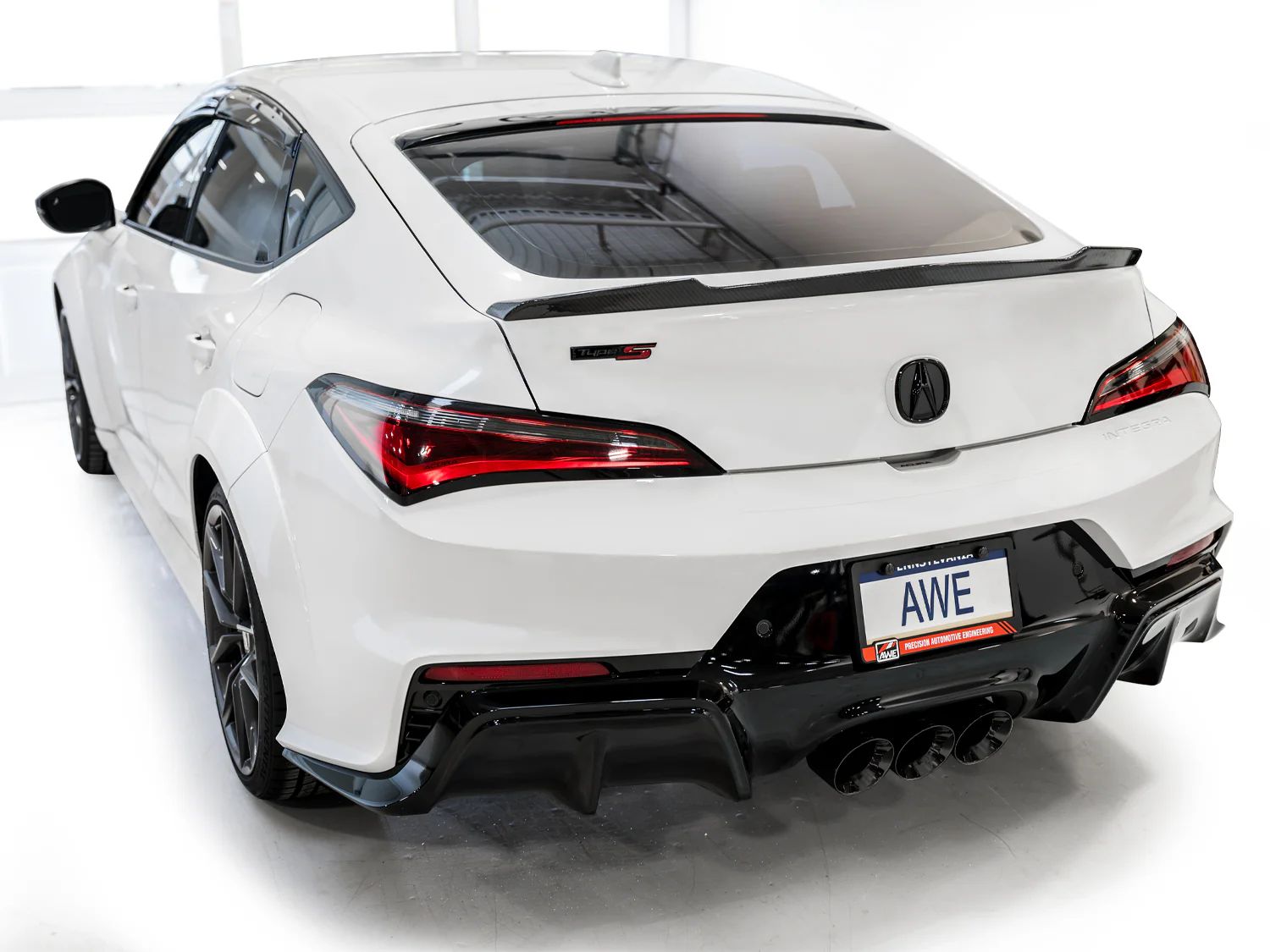
The 2024 Acura Integra Type S is a high-performance iteration of the affordable Acura luxury sedan. Sharing its powertrain with the Honda Civic Type R, it features a turbocharged four-cylinder engine that delivers 320 horsepower. Built for driving enthusiasts, the Integra Type S offers a six-speed manual transmission, adaptive dampers, and a limited-slip differential for an engaging driving experience.
Despite its sporty nature, the Integra Type S is also designed for comfort, making it suitable for daily driving. Inside, it boasts luxurious upgrades, such as heated, bolstered front seats, a 12-way power-adjustable driver’s seat, and a head-up display. As a new model, it hasn’t established a long track record, but its Honda lineage suggests it will offer solid reliability.
The Acura Integra Type S is a revival of a beloved nameplate from the past, now reimagined as a high-performance compact car that combines luxury, precision engineering, and driving excitement. Building on the legacy of the original Integra, the 2024 Type S raises the experience with a modern design, a powerful turbocharged engine, and advanced technology, all while staying true to its roots as a driver-focused car. This version of the Integra is positioned as a sportier, more aggressive alternative to the standard Integra, offering a refined yet thrilling performance for enthusiasts.
Under the hood, the 2024 Acura Integra Type S is powered by a 2.0-liter turbocharged four-cylinder engine, borrowed from the Honda Civic Type R but tuned to fit Acura’s luxury and performance image. This engine produces an impressive 320 horsepower and 310 lb-ft of torque, providing the Type S with serious acceleration and a punchy power delivery that is satisfying in all driving conditions.
Paired with a six-speed manual transmission, the Integra Type S caters to purists who value the engagement and control that comes from shifting gears themselves. The short-throw gearbox is smooth and precise, with a satisfying mechanical feel that enhances the driving experience, while the rev-matching feature helps ensure seamless downshifts for added control.
The front-wheel-drive layout may initially seem less exciting than all-wheel drive, which is common in many modern performance cars, but Acura has tuned the chassis and suspension to extract maximum performance from this setup.
The Integra Type S features a limited-slip differential, which helps distribute power effectively to the front wheels and improves traction, especially during cornering or spirited driving on winding roads. The result is a car that feels light on its feet, with sharp turn-in response and excellent grip. The steering is communicative and well-weighted, offering drivers a direct connection to the road.
Acura’s engineers have also outfitted the Type S with an adaptive damper system, which adjusts the suspension stiffness based on the selected drive mode. In Comfort mode, the ride is relatively compliant and suitable for everyday driving, absorbing bumps and rough surfaces with ease.
However, in Sport or Sport+ modes, the suspension firms up, reducing body roll and sharpening the handling dynamics to match the car’s high-performance character. This versatility allows the Type S to serve as both a comfortable daily driver and an agile track weapon, depending on the driver’s mood and road conditions.
On the exterior, the Acura Integra Type S distinguishes itself from the standard model with more aggressive styling cues. The front fascia features a larger, open grille design to improve airflow to the engine, while the wider stance and flared fenders give the car a muscular, planted look.
A functional rear spoiler and a trio of large exhaust tips at the rear further emphasize the car’s performance intentions. The Type S rides on 19-inch alloy wheels wrapped in high-performance summer tires, providing additional grip and enhancing the car’s visual presence. The design is sleek, modern, and unmistakably sporty, with just the right amount of Acura’s luxury DNA mixed in.
Inside, the cabin of the Integra Type S reflects the dual nature of the car as both a performance machine and a luxury vehicle. The interior materials are high-quality, with leather and Alcantara-trimmed seats that provide excellent support during aggressive driving, while still offering comfort for longer trips. The dashboard design is modern and uncluttered, with a driver-oriented layout that places key controls within easy reach. The metal pedals, carbon-fiber accents, and red stitching throughout the cabin add to the car’s sporty aesthetic.
Acura has equipped the Integra Type S with a host of technology features to ensure that it meets modern standards of connectivity and convenience. The centerpiece of the tech package is a 9-inch touchscreen infotainment system, which comes with Apple CarPlay and Android Auto compatibility, as well as a premium ELS Studio 3D audio system that delivers excellent sound quality.
The digital instrument cluster is fully customizable, allowing drivers to display key performance metrics or more traditional information like speed and fuel economy. Additionally, the car features wireless phone charging, multiple USB ports, and an intuitive voice command system, making it easy to stay connected and entertained while on the road.
Safety is also a priority in the Acura Integra Type S, with a suite of advanced driver assistance systems (ADAS) that come standard. These include adaptive cruise control, lane-keeping assist, blind-spot monitoring, and automatic emergency braking, among others. While these features may not be the primary focus for buyers drawn to the Type S for its performance, they add an extra layer of security and convenience for daily driving, ensuring that the car is both thrilling and practical.
In terms of practicality, the Acura Integra Type S does not disappoint. While its focus is clearly on performance, it still offers a usable rear seat and a decent amount of cargo space for a compact car. The rear seats can accommodate two passengers comfortably on shorter trips, and the hatchback design provides more cargo versatility than a traditional sedan. This makes the Integra Type S more versatile than many other performance cars in its class, offering the ability to handle everyday tasks without sacrificing its fun-to-drive nature.
The Acura Integra Type S competes in a crowded segment of high-performance compact cars, going up against models like the Volkswagen Golf R, Audi S3, and the Honda Civic Type R, its close cousin. Each of these cars offers a slightly different take on the formula, but the Integra Type S stands out for its combination of luxury, performance, and engaging driving dynamics. While the Civic Type R may be more focused on outright performance with its track-ready setup, the Integra Type S strikes a better balance for those who want a car that feels premium and refined while still being capable of delivering thrills on demand.
The Acura Integra Type S is a worthy successor to the iconic Integra nameplate, offering a compelling blend of performance, luxury, and everyday usability. Its turbocharged engine, manual transmission, and sharp handling make it a joy to drive;
while the high-quality interior, modern technology, and practical hatchback design ensure that it remains a viable option for those who need more than just a weekend toy. Whether you’re a driving enthusiast looking for a car that can handle both the daily commute and spirited backroad driving, or a former Integra owner looking to relive the glory days with a modern twist, the 2024 Acura Integra Type S delivers on all fronts.
8) 2024 Lexus RC-F
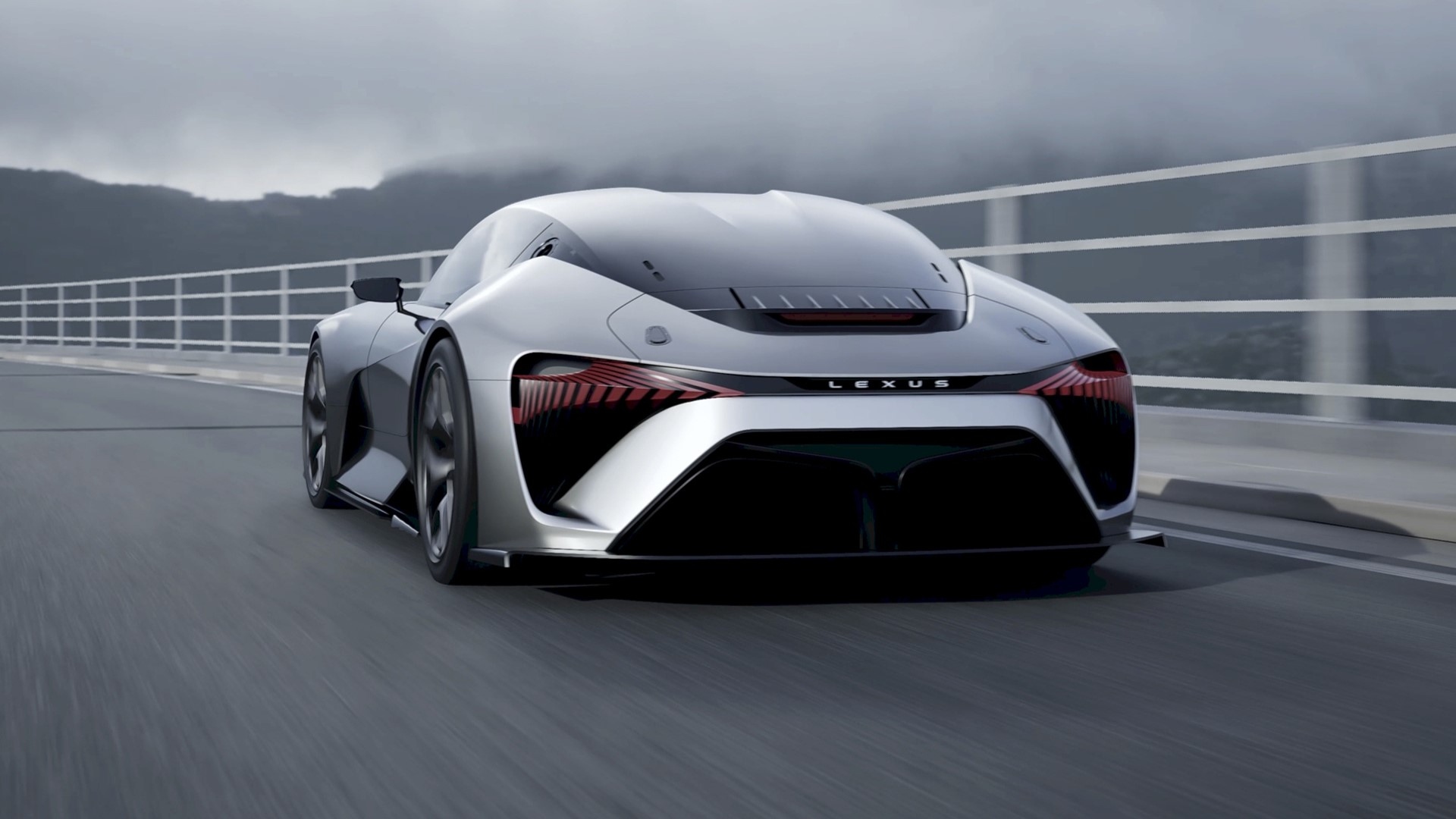
The 2024 Lexus RC-F is a strong contender in the V8-powered sports car category, offering a 472-horsepower engine at a relatively affordable price. While the RC-F has been around since 2015 and may have been overshadowed by newer models, it remains a powerful machine with key features like Brembo brakes, adaptive suspension, and a limited-slip rear differential.
Buyers looking for a sportier appearance and enhanced performance can opt for the carbon package, which adds carbon-fiber trims and other upgrades. For those who want an even more extreme experience, the Track Edition offers heavily-tuned performance but at a price approaching that of the Lexus LC 500, making it less accessible for most buyers.
The Lexus RC-F is a performance-oriented luxury coupe that represents the pinnacle of Lexus’s RC lineup, blending aggressive styling, high-end craftsmanship, and impressive power into a package that stands out in the competitive luxury sports car market. It’s a car designed for enthusiasts who appreciate both the prestige of the Lexus brand and the thrill of a high-performance vehicle. With its powerful V8 engine, sharp handling, and a host of luxury features, the RC-F offers a balanced driving experience that caters to those who want a combination of speed, comfort, and refinement.
At the heart of the Lexus RC-F is its 5.0-liter naturally aspirated V8 engine, which produces a robust 472 horsepower and 395 lb-ft of torque. This engine is one of the last of its kind in an era where turbocharged and downsized engines have become the norm.
The high-revving nature of the V8 offers a visceral experience, with a linear power delivery that builds as the revs climb, providing thrilling acceleration. The engine note is equally intoxicating, with a deep, throaty exhaust sound that becomes even more pronounced in Sport and Sport+ modes, which are part of the car’s drive mode selection system. Unlike many modern performance cars that rely on artificial sound enhancement through the speakers, the RC-F’s exhaust note is genuine and raw, adding to the car’s emotional appeal.
Power is sent to the rear wheels via an eight-speed automatic transmission, which offers smooth shifts in everyday driving but can become more aggressive in manual mode or during spirited driving. The transmission can be controlled via steering wheel-mounted paddle shifters, giving drivers the ability to select gears manually when desired. While it may lack the lightning-quick shifts of some dual-clutch transmissions found in competitors, the RC-F’s automatic gearbox is still responsive and well-matched to the car’s character, balancing performance with refinement.
In terms of handling, the Lexus RC-F benefits from a well-tuned chassis that offers a good balance between comfort and agility. The suspension is firm enough to keep the car composed during hard cornering, with minimal body roll and precise steering that gives the driver confidence on winding roads.
At the same time, the ride quality remains relatively comfortable, especially for a high-performance coupe. The RC-F doesn’t sacrifice too much in the way of comfort, making it a more practical option for daily driving than some of its more track-focused competitors. For those looking for an even sharper driving experience, the available RC-F Track Edition adds carbon-fiber components, upgraded brakes, and a more aggressive suspension setup, though this comes at the cost of some ride comfort.
The RC-F also comes with a limited-slip differential and optional torque-vectoring differential, which enhances the car’s handling by distributing power more effectively between the rear wheels. This helps improve grip and stability during aggressive cornering, making the RC-F feel more planted and responsive. The car’s large Brembo brakes provide strong stopping power, with excellent pedal feel and resistance to fade during extended driving sessions.
On the exterior, the Lexus RC-F has a bold and aggressive design that reflects its performance credentials. The car features Lexus’s signature spindle grille, which is large and prominent, giving the front end a menacing look. The wide stance, sculpted lines, and aerodynamic touches, such as the functional air vents and rear spoiler, further emphasize the car’s athleticism.
The RC-F Track Edition, in particular, takes the styling up a notch with carbon-fiber accents, a larger rear wing, and lightweight 19-inch forged alloy wheels that not only enhance its appearance but also improve performance by reducing weight.
Inside, the RC-F’s cabin is a blend of luxury materials and sporty design elements. The seats are heavily bolstered, providing excellent support during high-speed cornering, but they are also comfortable enough for long drives. Leather and Alcantara upholstery are standard, with available options for carbon fiber trim and other high-end materials.
The driver-focused cockpit features an intuitive layout, with controls that are easy to reach and use. The digital gauge cluster, inspired by the Lexus LFA supercar, changes its appearance depending on the selected drive mode, displaying performance information such as g-forces, lap times, and throttle input in a visually engaging way.
Lexus has equipped the RC-F with a comprehensive suite of technology features. The infotainment system includes a 10.3-inch display, navigation, Apple CarPlay, Android Auto, and a premium sound system. However, the system is operated via Lexus’s Remote Touch interface, which uses a touchpad located on the center console.
This system has been criticized for being less intuitive and more distracting to use compared to traditional touchscreen interfaces found in many competitors. Despite this, the overall interior experience is one of high quality, with excellent fit and finish, and a sense of luxury that is expected from the Lexus brand.
In terms of safety, the RC-F comes standard with Lexus’s Safety System+ suite of driver assistance technologies. These include adaptive cruise control, lane departure warning, lane-keeping assist, and automatic emergency braking. The car also features blind-spot monitoring and rear cross-traffic alert, which are useful for improving visibility and awareness, especially in a coupe with limited rearward visibility. These safety features add a layer of practicality and peace of mind to the RC-F’s high-performance nature, making it suitable for both spirited driving and everyday use.
When comparing the Lexus RC-F to its competitors, such as the BMW M4, Audi RS5, and Mercedes-AMG C63, it becomes clear that the RC-F prioritizes a balance between luxury and performance rather than outright track capability.
While it may not be as razor-sharp as the M4 on a race circuit, it offers a more comfortable and refined driving experience without sacrificing too much in terms of performance. Additionally, the naturally aspirated V8 engine is a unique selling point in this segment, providing a more linear and engaging power delivery than the turbocharged engines found in most of its rivals.
The Lexus RC-F also stands out for its reliability, a hallmark of the Lexus brand. While many high-performance cars require frequent and costly maintenance, the RC-F benefits from Lexus’s reputation for building durable, low-maintenance vehicles. This makes the RC-F a more attractive option for buyers who want a sports coupe that can be driven regularly without the headache of constant repairs or expensive service visits.
The Lexus RC-F is a well-rounded luxury performance coupe that offers a blend of power, comfort, and everyday usability. Its naturally aspirated V8 engine, sharp handling, and aggressive styling make it a compelling choice for driving enthusiasts, while its high-quality interior, advanced technology, and Lexus’s reputation for reliability make it a practical option for those who want a sports car that can also serve as a daily driver.
Whether you’re drawn to its distinctive design, its smooth and powerful engine, or its balance between performance and refinement, the RC-F delivers an exciting and engaging driving experience that is hard to match in the luxury sports coupe segment.
7) 2024 Chevrolet Corvette
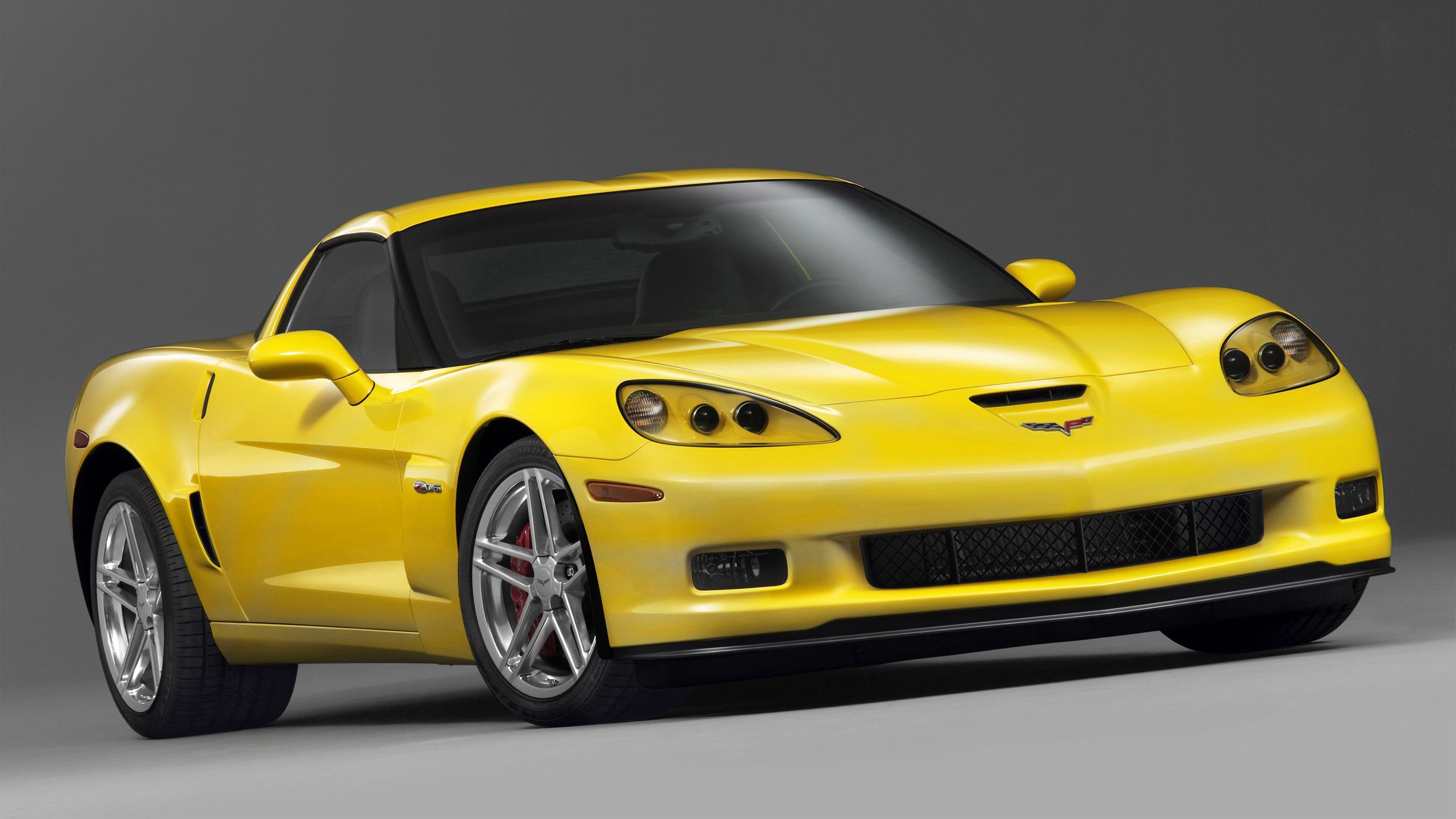
The 2024 Chevrolet Corvette continues to dominate the American sports car scene. Starting at $68,300, the C8 Corvette boasts a potent 6.2-liter V8 engine producing 490 horsepower and 465 lb-ft of torque. Despite its high performance, the Corvette remains relatively affordable in terms of maintenance, with RepairPal estimating an average annual cost of $737.
Consumer Reports rates the latest Corvette highly, giving it a road test score of 97/100 and a perfect 5/5 for predicted ownership satisfaction. The Corvette’s combination of power, precision, and value makes it a serious competitor to the best sports cars from Europe.
The Chevrolet Corvette, especially in its current eighth-generation (C8) form, represents a significant leap forward for the iconic American sports car. It’s a vehicle that has long been celebrated for delivering high-performance thrills at a relatively affordable price, but the C8 model raised it to a new level by moving to a mid-engine layout.
This dramatic shift in design has positioned the Corvette as a true competitor to some of the world’s top-tier sports cars, blending cutting-edge engineering with the heritage that has made it one of the most recognized names in automotive history.
The most notable change with the C8 Corvette is the move to a mid-engine configuration. Traditionally, Corvettes have been front-engine, rear-wheel-drive vehicles, but Chevrolet decided to break from that tradition to enhance the car’s handling, balance, and overall performance.
By placing the engine behind the driver and ahead of the rear axle, the C8 benefits from better weight distribution, allowing for more precise cornering and improved stability at high speeds. This change has transformed the Corvette’s driving dynamics, giving it an edge that was previously unattainable in earlier models.
Powering the Corvette is a 6.2-liter naturally aspirated V8 engine, known as the LT2. This engine produces 490 horsepower and 465 lb-ft of torque in its base form, but with the optional Z51 Performance Package, those numbers jump slightly to 495 horsepower and 470 lb-ft of torque.
This engine delivers the kind of raw power that Corvette enthusiasts have come to expect, with a deep, throaty exhaust note that underscores its performance pedigree. The V8’s placement behind the driver provides an exhilarating experience, especially when accelerating hard, as the car launches forward with immediacy and confidence.
Performance is a key selling point for the Corvette, and the numbers speak for themselves. The C8 Corvette can sprint from 0 to 60 mph in just 2.9 seconds with the Z51 package, which puts it in supercar territory. This kind of acceleration is remarkable for a car in its price range, and it makes the Corvette an appealing option for those who want a car that delivers jaw-dropping speed without the supercar price tag. The top speed of the Corvette is around 194 mph, making it one of the fastest cars in its class.
The C8 Corvette comes with an eight-speed dual-clutch automatic transmission, which is another departure from previous generations. Earlier models offered manual transmissions, but Chevrolet opted to go with the dual-clutch for its quicker, more precise shifts and overall performance benefits.
The transmission can be operated manually using paddle shifters on the steering wheel, giving drivers more control when they want it. The shifts are lightning-fast, especially when the car is in its more aggressive drive modes, and the transmission helps deliver smooth and seamless acceleration.
Handling is another area where the C8 Corvette excels. Thanks to its mid-engine layout and finely tuned suspension, the car feels incredibly agile and responsive. Whether you’re carving through tight corners or cruising on the highway, the Corvette maintains a sense of balance and control that inspires confidence.
The Z51 Performance Package further enhances the car’s handling with features like a performance-tuned suspension, larger brakes, and an electronic limited-slip differential. These upgrades help the car stick to the road even more effectively, making it a joy to drive on twisty roads or on the track.
One of the benefits of the Corvette’s new design is its improved ride quality. The previous generations of the Corvette, while capable, often had a reputation for being somewhat harsh on rough roads. The C8, however, has a more refined ride, thanks in part to its optional Magnetic Ride Control system, which adjusts the suspension in real time to provide the best balance of comfort and performance. This means that the Corvette can be both a thrilling performance machine and a car that’s comfortable enough for daily driving.
The Corvette’s interior has also seen a significant upgrade with the C8 generation. In the past, Corvettes were sometimes criticized for their interior quality, but the C8 addresses this with a cabin that feels much more premium. High-quality materials like leather, aluminum, and carbon fiber are used throughout the cabin, giving it a more luxurious feel.
The driver-centric layout puts all the controls within easy reach, and the cockpit-style design makes you feel like you’re truly in command of a high-performance machine. The 12-inch digital instrument cluster and 8-inch infotainment display are crisp and clear, and the infotainment system supports Apple CarPlay and Android Auto, ensuring you stay connected while on the go.
The Corvette offers a decent amount of practicality for a mid-engine sports car as well. While the mid-engine layout limits cargo space compared to previous models, the Corvette still offers both a front trunk (frunk) and a rear trunk, providing a surprising amount of storage for a car of this type. This makes the Corvette more usable for road trips or weekend getaways, something that can’t always be said for other mid-engine sports cars.
In terms of safety, the Corvette is equipped with a suite of modern safety features, including a rearview camera, front and rear parking sensors, and a performance traction management system. While the Corvette is designed primarily for performance, Chevrolet hasn’t skimped on ensuring that it has the necessary features to keep drivers safe both on the road and on the track.
When compared to its competitors, the C8 Corvette stands out for its combination of performance, price, and daily usability. Cars like the Porsche 911 and the Audi R8 offer similar levels of performance, but they come with much higher price tags. The Corvette’s ability to deliver supercar-like performance at a fraction of the cost is one of its most compelling features. It also maintains its own distinct character, with its American muscle roots shining through, even with the more exotic mid-engine layout.
The Chevrolet Corvette C8 represents a bold new chapter for this legendary sports car. Its mid-engine design, powerful V8 engine, and refined handling make it a serious contender in the high-performance sports car market, while its improved interior and daily usability ensure that it’s not just a track toy. Whether you’re a longtime Corvette fan or someone looking for a high-performance car that won’t break the bank, the C8 Corvette offers a thrilling driving experience that’s hard to match at its price point.
6) 2024 Subaru BRZ
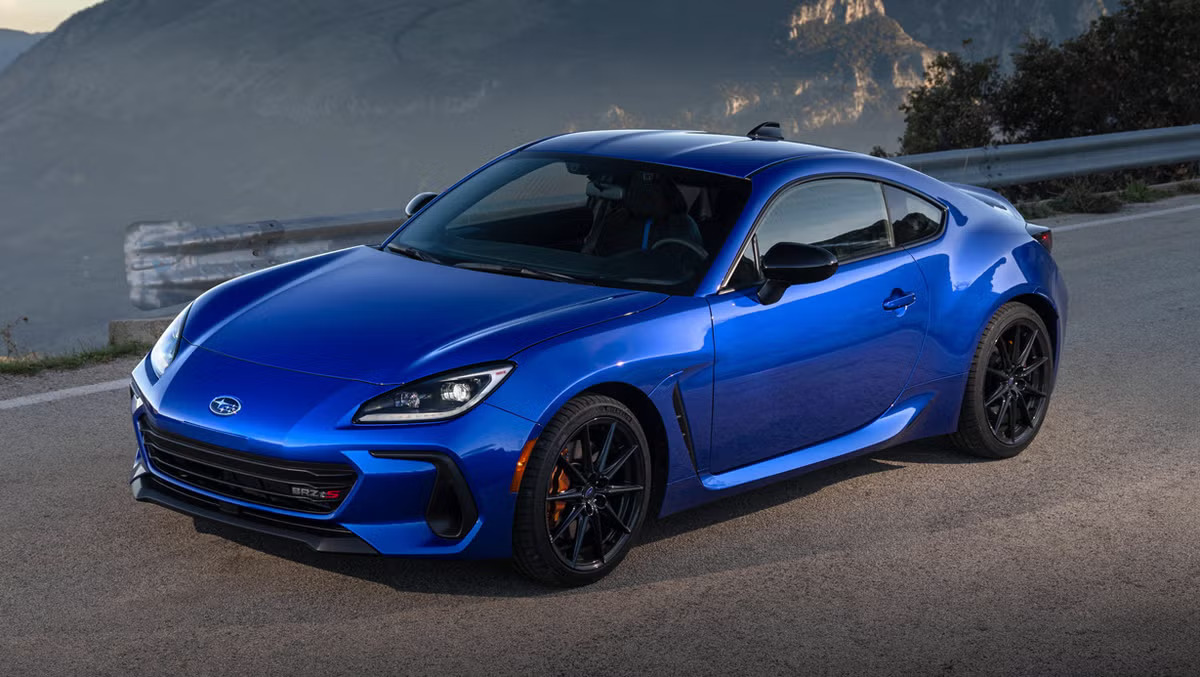
The 2024 Subaru BRZ adheres to the philosophy that an agile, lightweight sports car can deliver as much excitement as its higher-powered rivals. Starting at a lower price point than most competitors, the BRZ offers 228 horsepower from its 2.4-liter flat-four engine and accelerates from 0 to 60 mph in just 5.5 seconds.
Its nimble handling and affordability make it an attractive option for drivers seeking a fun yet budget-friendly sports car. The 2024 BRZ tS trim enhances the driving experience with larger brakes, 18-inch black-painted wheels, and Hitachi suspension dampers, making it ideal for spirited driving on winding roads or tracks.
The Subaru BRZ is a compact sports car that has earned a solid reputation for its fun-to-drive nature, lightweight design, and accessible performance. Built-in collaboration with Toyota, the BRZ shares its platform with the Toyota 86 (formerly Scion FR-S), but Subaru’s version retains its unique flavor, particularly with its boxer engine and suspension tuning.
The BRZ is designed for driving enthusiasts who prioritize handling, driver engagement, and affordability over sheer power, making it an attractive option for those who want an enjoyable sports car without the cost or complexity of high-end performance vehicles.
One of the key aspects of the Subaru BRZ is its balanced and lightweight chassis. Weighing in at just around 2,800 pounds, the BRZ is one of the lightest sports cars on the market today. This lightweight design, combined with a low center of gravity thanks to its flat-four boxer engine, gives the BRZ a sharp and responsive feel on the road.
Whether you’re attacking twisty backroads or finding through city streets, the car feels agile and quick to respond to inputs, providing a direct connection between the driver and the road. This emphasis on lightweight, nimble handling is what sets the BRZ apart from many other modern sports cars, which tend to be heavier and more powerful but often less engaging.
Under the hood, the Subaru BRZ is powered by a 2.4-liter naturally aspirated flat-four engine that produces 228 horsepower and 184 lb-ft of torque. While these numbers might seem modest compared to some turbocharged rivals, the BRZ’s focus has always been more about balance and driving dynamics rather than raw straight-line speed.
The 2.4-liter engine, an improvement over the previous 2.0-liter unit, provides more low-end torque, making the car feel more responsive in everyday driving situations. Acceleration is brisk, but not overwhelming, with the BRZ able to go from 0 to 60 mph in just under six seconds. It’s not the fastest car in its class, but its power delivery is smooth, and the engine loves to rev, providing an engaging driving experience.
One of the standout features of the Subaru BRZ is its six-speed manual transmission. The short-throw shifter is precise and satisfying to use, offering an old-school driving experience that many enthusiasts crave. The clutch is light, and the engagement point is easy to find, making the BRZ a breeze to drive in both spirited and relaxed driving situations.
For those who prefer an automatic, a six-speed automatic transmission is also available, but the manual version is where the car truly shines. The manual transmission allows drivers to extract the most from the engine and fully immerse themselves in the driving experience, which is what the BRZ is all about.
Handling is where the Subaru BRZ really excels. The car’s rear-wheel-drive layout, combined with its well-tuned suspension and responsive steering, makes it a joy to drive on winding roads. The car feels perfectly balanced, with just enough power to let the rear end slide out when pushed hard, but without feeling out of control.
The BRZ is known for its playful handling characteristics, and it encourages drivers to explore its limits. The steering is direct and offers good feedback, allowing the driver to place the car with precision through corners. This sense of control and feedback is one of the reasons why the BRZ is so beloved by driving enthusiasts.
Subaru has also improved the BRZ’s suspension for a more composed ride without sacrificing its sharp handling. The car features MacPherson struts up front and a double-wishbone rear suspension, providing a good balance between comfort and performance. The BRZ is stiff enough to feel planted and responsive during spirited driving but compliant enough to handle daily driving without feeling overly harsh. It’s a sports car that can be driven every day without feeling punishing, which is a rare quality in this segment.
Inside, the Subaru BRZ features a driver-focused cabin that’s simple yet functional. The interior design is straightforward, with everything placed within easy reach of the driver. The materials used are of decent quality, though not particularly luxurious, which is expected in a car at this price point.
What the interior lacks in luxury, it makes up for in functionality. The supportive front seats are designed to keep you in place during spirited driving, and the driving position is excellent, with good visibility and easy access to the controls. The rear seats, however, are more of a formality; they’re extremely tight and best suited for small children or additional cargo space.
Technology-wise, the BRZ comes equipped with an 8-inch touchscreen infotainment system that supports Apple CarPlay and Android Auto, ensuring you stay connected on the go. The system is intuitive and easy to use, with simple menus and quick response times. There’s also a digital instrument cluster that provides key driving information and adds a modern touch to the otherwise classic sports car experience.
In terms of practicality, the BRZ isn’t designed to be a family hauler, but it does offer enough utility for weekend trips or daily commuting. The trunk space is limited, but the rear seats can fold down to provide additional cargo room, making it possible to carry larger items if needed. It’s not a car you buy for practicality, but it offers enough functionality to make it usable in everyday situations, especially for a single person or a couple who prioritize driving enjoyment over cargo space.
When it comes to fuel efficiency, the BRZ is fairly economical for a sports car. The 2.4-liter engine delivers around 21-22 mpg in the city and 30-31 mpg on the highway, depending on whether you opt for the manual or automatic transmission. These numbers are respectable for a performance-oriented vehicle, making the BRZ a relatively affordable car to own and operate in the long run.
In terms of safety, the Subaru BRZ comes with a decent array of standard features. The automatic version includes Subaru’s EyeSight Driver Assist Technology, which offers adaptive cruise control, lane-keeping assist, and automatic emergency braking. However, these features are not available on the manual version, which is something to keep in mind if safety tech is a priority.
The Subaru BRZ competes in a unique segment of affordable sports cars, going up against rivals like the Toyota 86, Mazda MX-5 Miata, and even more powerful options like the Ford Mustang EcoBoost and Nissan Z. What sets the BRZ apart is its purity of driving experience. While it may not have the turbocharged power of some of its rivals, the BRZ’s lightweight design, rear-wheel-drive layout, and engaging manual transmission make it one of the most fun cars to drive in its price range. It’s a car for enthusiasts who value driving feel and connection over raw numbers.
The Subaru BRZ is a fantastic option for those who want an affordable, engaging sports car that prioritizes driving enjoyment above all else. Its lightweight design, precise handling, and manual transmission make it a standout in its class, while its improved engine and more refined interior add to its overall appeal. Whether you’re a seasoned driving enthusiast or someone looking to get into the world of sports cars, the BRZ offers an accessible and rewarding driving experience that’s hard to beat at its price point.
5) 2024 Lexus LC 500

The 2024 Lexus LC 500 offers a striking combination of beauty and power, standing out as one of Lexus’ most visually stunning and performance-driven models. Powered by a naturally aspirated 5.0-liter V8 engine, it generates 471 horsepower and nearly 400 lb-ft of torque, offering an exhilarating driving experience.
In a time when V8 engines are becoming rarer, the LC 500 feels special, and its starting price of nearly $100,000 is justified given its luxurious build and performance capabilities. Lexus’ reputation for reliability also raises the LC 500 as a sound investment for the long term, with the model destined to become a future classic in the sports car world
The Lexus LC 500 is a luxury grand tourer that blends striking design, high-end craftsmanship, and exhilarating performance. Introduced as a flagship model for Lexus, the LC 500 represents the pinnacle of the brand’s engineering and design capabilities. With its sleek, aggressive styling and a naturally aspirated V8 engine under the hood, the LC 500 is a car that demands attention both on the road and in the showroom. It strikes a balance between the comfort and refinement expected of a luxury car and the raw performance and excitement of a sports car.
At the heart of the Lexus LC 500 is a 5.0-liter V8 engine, which produces 471 horsepower and 398 lb-ft of torque. This engine, shared with other performance-oriented Lexus models like the RC F and GS F, is known for its linear power delivery and high-revving nature.
What sets the LC 500 apart from many of its competitors is the fact that it retains a naturally aspirated engine in a time when most automakers are turning to turbocharged or hybrid powertrains. This gives the LC 500 a unique character, with a smooth yet visceral powerband and a sonorous exhaust note that intensifies as the revs climb. The V8 engine is mated to a 10-speed automatic transmission, which shifts quickly and smoothly, enhancing both the car’s performance and its grand touring credentials.
Performance-wise, the LC 500 is capable of accelerating from 0 to 60 mph in just 4.4 seconds, making it a fast car by any standard, but not necessarily the quickest in its class. The car’s focus is more on providing a refined and luxurious driving experience than setting record lap times.
That being said, the LC 500’s handling is sharp, and its rear-wheel-drive layout gives it a balanced and engaging feel on twisty roads. The suspension is tuned to provide a comfortable ride on long journeys, but it can also stiffen up when you switch to the sportier drive modes, allowing for more aggressive cornering and precise handling.
One of the standout features of the Lexus LC 500 is its design. This car is a true head-turner, with a low-slung, muscular stance and a sweeping silhouette that exudes sophistication and athleticism. The front of the car is dominated by Lexus’ signature spindle grille, which is flanked by sharp, angular headlights with distinctive LED running lights.
The long hood and wide rear haunches give the LC 500 a classic GT car profile, while the intricate details in the bodywork, such as the flush door handles and sculpted rear end, add a modern and futuristic touch. The 21-inch wheels and quad exhaust tips further enhance the car’s aggressive and sporty aesthetic.
The interior of the Lexus LC 500 is equally impressive, with a level of craftsmanship and attention to detail that rivals some of the best luxury cars on the market. The cabin is a blend of high-quality materials, including leather, Alcantara, and metal accents, all meticulously assembled to create a luxurious and welcoming environment.
The design is both elegant and functional, with a driver-centric layout that places all the important controls within easy reach. The seats are comfortable and supportive, designed to keep occupants comfortable on long drives while also providing plenty of lateral support during spirited driving.
In terms of technology, the LC 500 comes well-equipped with a suite of advanced features. The infotainment system is displayed on a 10.3-inch screen, which is controlled via Lexus’ Remote Touch interface. While the system offers plenty of functionality, including navigation, Apple CarPlay, Android Auto, and a premium Mark Levinson sound system, the touchpad interface can be somewhat finicky to use, especially while driving. However, once you get used to it, the system offers all the tech features you’d expect from a luxury car in this segment.
Safety features are also plentiful in the Lexus LC 500, with the Lexus Safety System+ suite of advanced driver assistance systems included as standard. This includes features like adaptive cruise control, lane-keeping assist, automatic emergency braking, and pedestrian detection. These systems work seamlessly to provide a safer driving experience without being overly intrusive.
Despite its sports car aspirations, the Lexus LC 500 is also a competent grand tourer, offering a surprisingly comfortable ride on long trips. The suspension is adaptive, meaning it can adjust to provide a smooth ride when cruising on the highway, yet still offer enough stiffness for spirited driving. The cabin is well-insulated from road noise, and the seats are designed to be comfortable for extended periods, making the LC 500 a great choice for long-distance travel. There’s also a hybrid version of the LC, the LC 500h, for those who prioritize fuel efficiency and want an alternative to the V8 model.
However, the LC 500 is not without its downsides. One of the most notable is its limited practicality. The rear seats are small and best suited for short trips or additional storage space rather than carrying passengers.
The trunk space is also on the smaller side, with just 5.4 cubic feet of cargo room, which limits the amount of luggage you can take on a trip. Additionally, the car’s fuel economy is on the lower end of the spectrum, with the V8 model achieving an EPA-estimated 16 mpg in the city and 25 mpg on the highway, which is to be expected given the size of the engine and the car’s performance capabilities.
The Lexus LC 500 competes in a segment that includes some heavy hitters, such as the Porsche 911, Mercedes-Benz SL-Class, and the BMW 8 Series. While the LC 500 may not have the outright performance of some of its rivals, it stands out for its unique combination of style, luxury, and driving enjoyment. It’s a car that offers an emotional connection, thanks to its naturally aspirated V8 engine and its stunning design, and it’s aimed at buyers who want more than just raw numbers on a spec sheet. The LC 500 is a car that you buy with your heart as much as your head.
The Lexus LC 500 is a remarkable grand tourer that combines luxury, performance, and style in a way that few cars can match. Its naturally aspirated V8 engine, sharp handling, and exquisite design make it a standout in its class, while its comfortable and well-crafted interior ensures that it can be used as a daily driver or for long-distance trips.
While it may not be the most practical or fuel-efficient car in its segment, the LC 500’s focus on delivering an engaging and enjoyable driving experience makes it a compelling choice for those who want a luxury sports car that stands out from the crowd. Whether you’re cruising down the highway or carving through a mountain road, the Lexus LC 500 offers an experience that’s both exhilarating and refined.
4) 2024 Porsche 718 Boxster
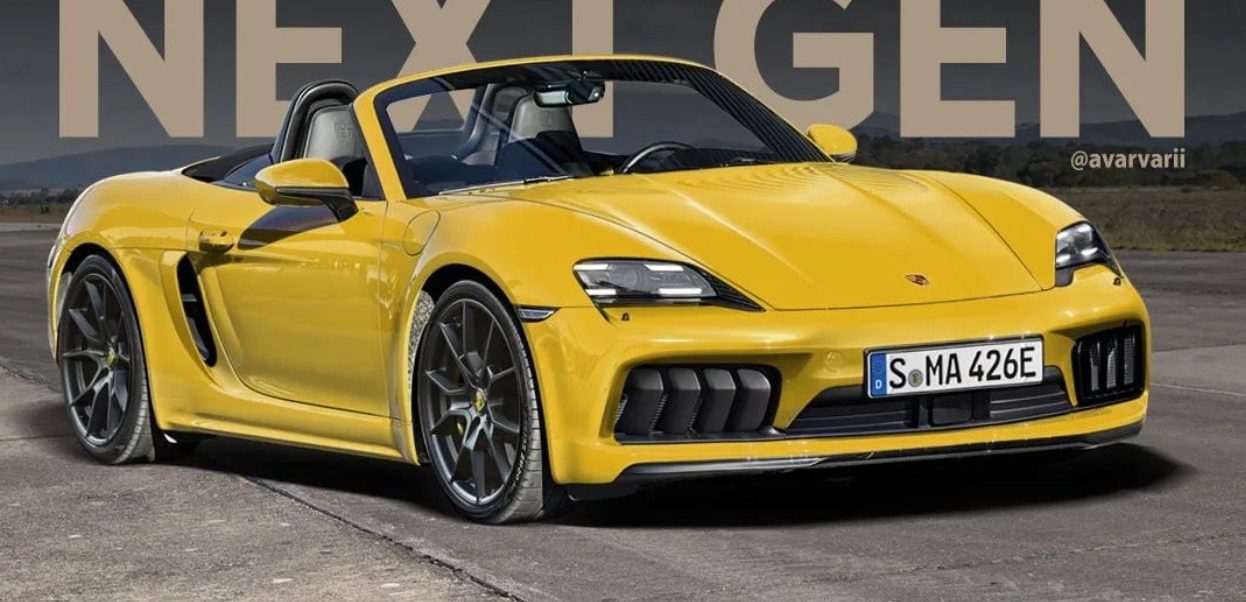
The 2024 Porsche 718 Boxster, though often overshadowed by the Porsche 911, deserves recognition for its excellent balance of performance and driving pleasure. Available as a convertible, the 718 Boxster starts at $70,400 and is powered by a 300-horsepower engine with 280 lb-ft of torque. Its exceptional handling makes it one of the best convertible sports cars on the market in 2024.
While the Cayman model lacks reliability data on Consumer Reports, the Boxster earns a predicted reliability score of 66/100. It surpasses close competitors like BMW and Toyota, but at a higher price point, you might expect that. Maintenance costs over ten years are estimated at an average of $15,760, reflecting its luxury sports car status.
3) 2024 Nissan Z

Japanese manufacturers have long been synonymous with delivering exceptional driving experiences, and Nissan continues to set the benchmark with the 2024 Nissan Z. With a starting price of $42,970, this model boasts an impressive output of 400 horsepower and 350 pound-feet of torque.
The 2024 Nissan Z shows a slight improvement in reliability, achieving a score of 45 out of 100, which places it in the average dependability category according to Consumer Reports. While Nissan struggles to compete with its rivals in terms of reliability overall, this score is one of the highest for the brand this year.
2) 2024 Toyota GR Supra
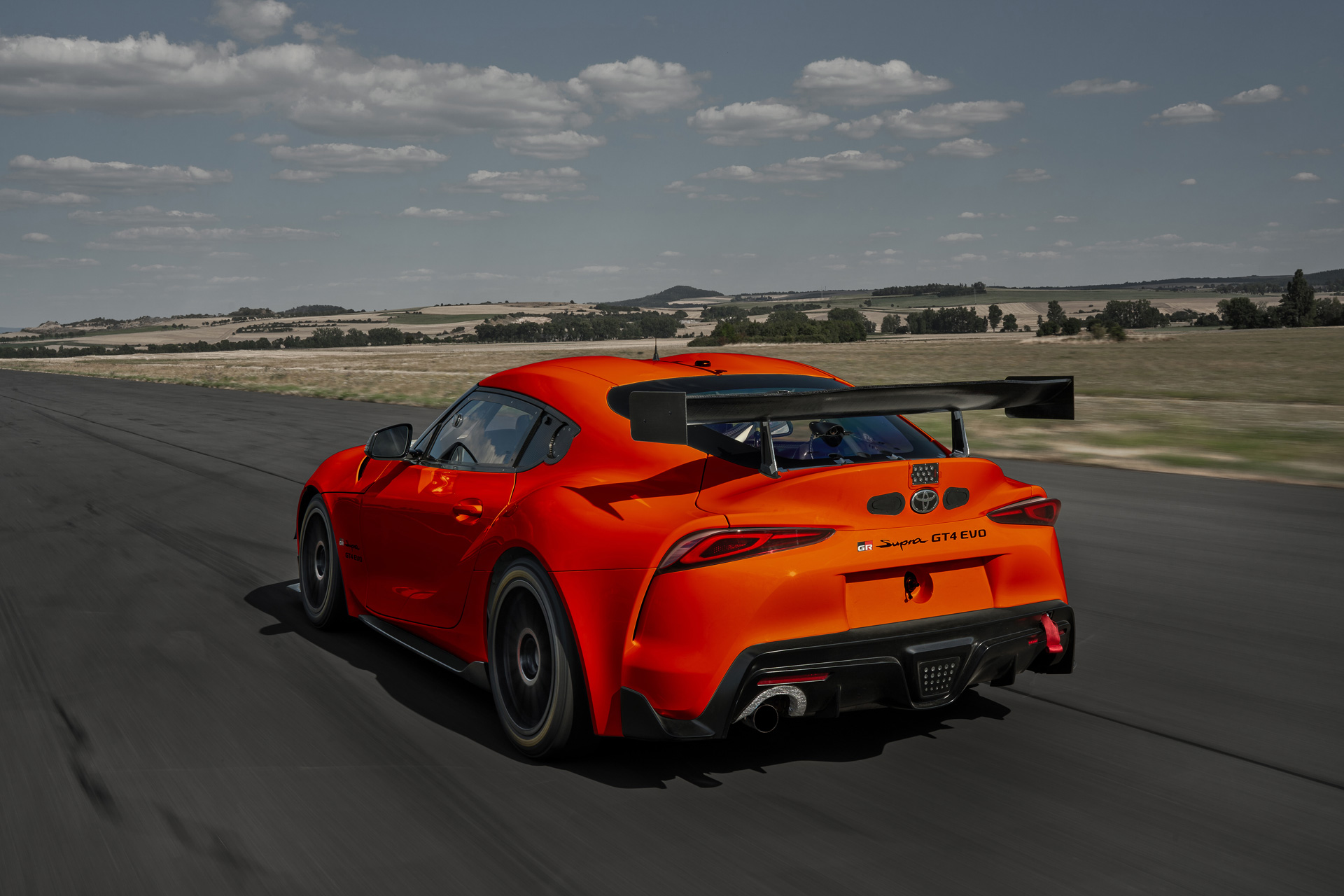
The Toyota Supra stands as one of the most legendary names in sports car history. Following its reintroduction in 2019 under the ‘GR Supra’ designation, which honors Toyota’s motorsport division, the 2024 model builds on that legacy. Pricing begins at $46,440 for the 2.0-liter variant, and it offers a six-speed manual option for the 3.0-liter trims.
With a reliability score of 65 out of 100 from Consumer Reports, the 2024 GR Supra maintains Toyota’s strong reliability reputation, paralleling the success seen in its sedans and SUVs. Its road test score of 91 out of 100 further underscores its appeal as a practical sports car suitable for daily driving and occasional track days.
1) 2024 Toyota GR86
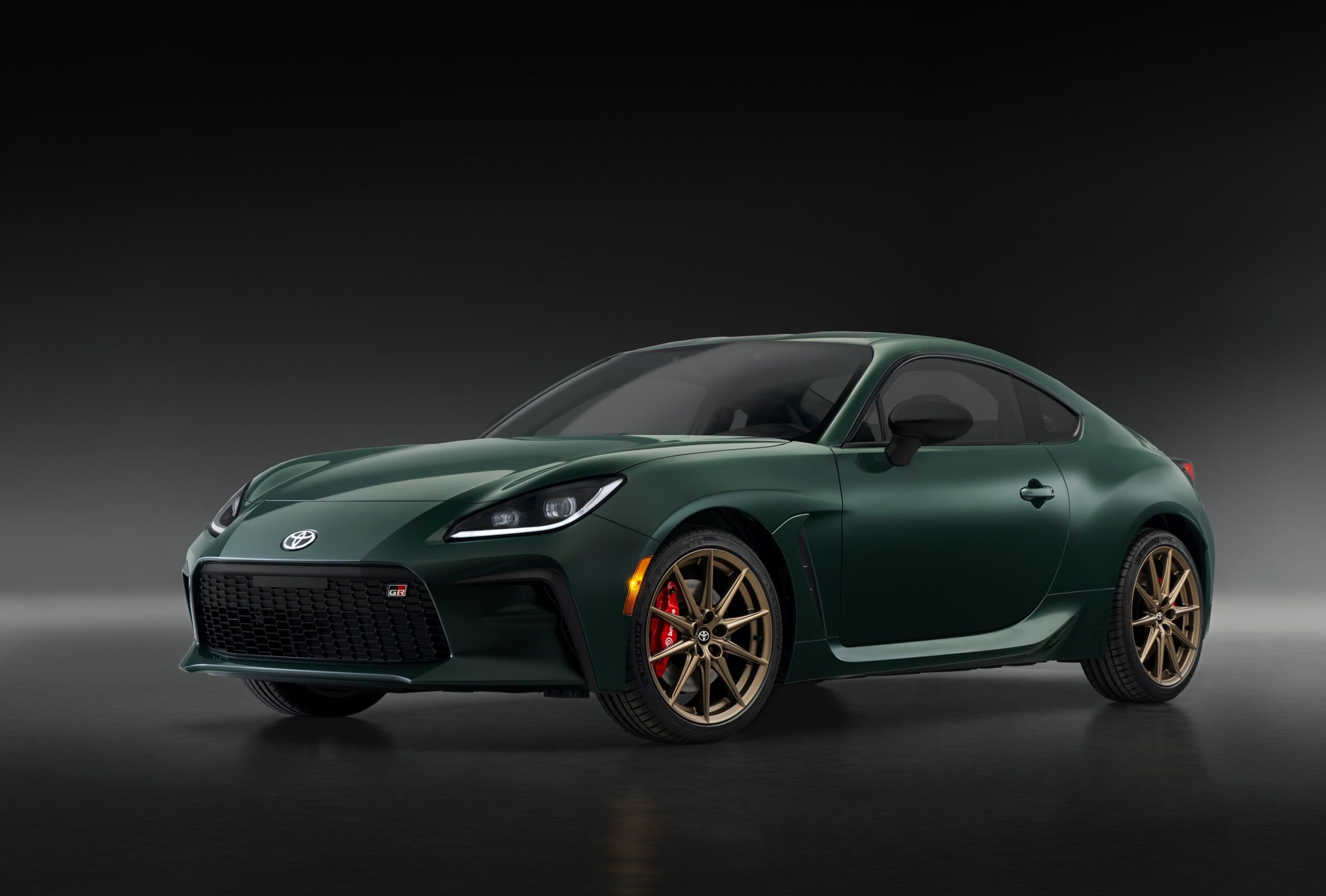
Replacing the GT86 in 2022, the GR86 offers an accessible option in the sports car market, starting at $29,300. While it delivers slightly more power than the Mazda MX-5 Miata, it does so at a more modest pace, generating 228 horsepower and 184 pound-feet of torque.
In terms of reliability, the GR86 ranks closely with the MX-5, receiving a score of 76 out of 100 from Consumer Reports. The annual maintenance costs are also appealing, averaging just $456 per year according to RepairPal.

